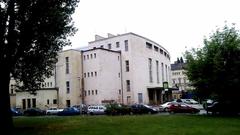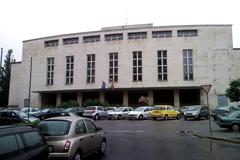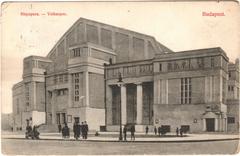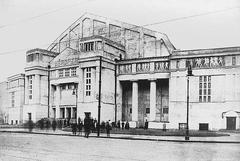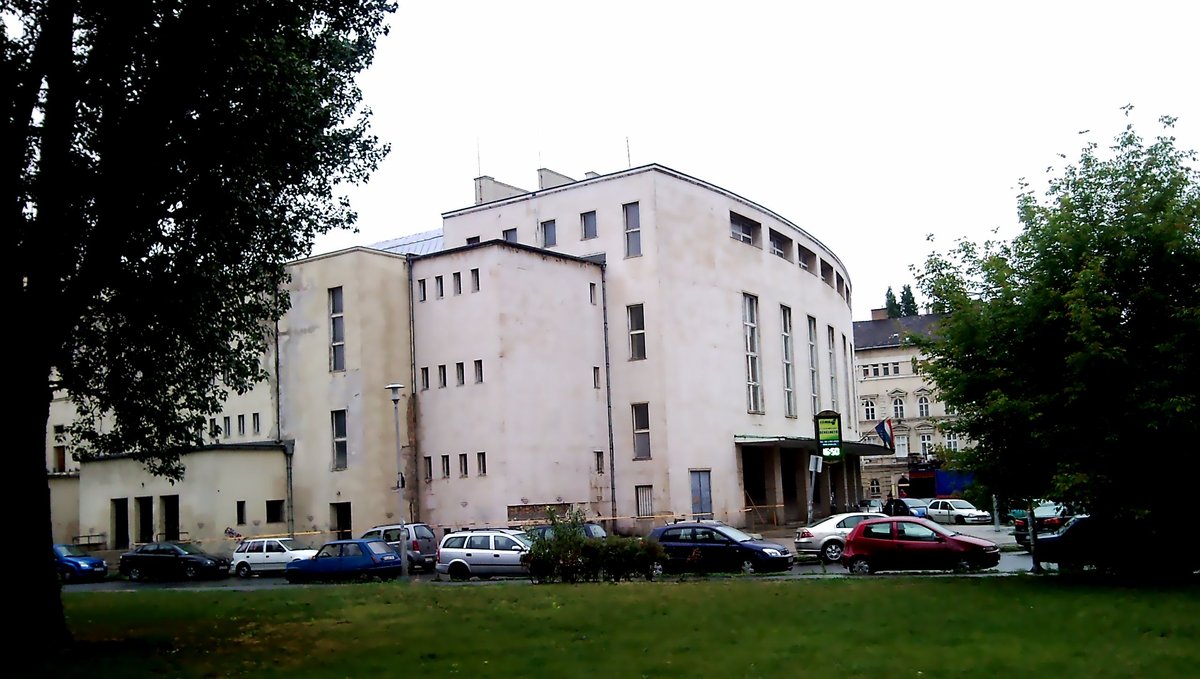
Erkel Theatre Budapest: Visiting Hours, Tickets, and Historical Significance
Date: 14/06/2025
Introduction
Located in Budapest’s lively Józsefváros district, the Erkel Theatre stands as one of Hungary’s most significant historical sites and a beacon of national operatic and theatrical tradition. Established in 1911 as the Népopera (“People’s Opera”), the theatre was created to democratize the experience of opera and ballet, bringing high culture to a broader audience beyond the elite. Named in honor of Ferenc Erkel, composer of the Hungarian national anthem and a foundational figure in Hungarian opera, the theatre continues to embody a spirit of cultural inclusivity and national pride (We Love Budapest; opera.hu).
This comprehensive guide covers the theatre’s architectural highlights, historical evolution, visitor information—including visiting hours and ticketing—performance schedules, accessibility, and nearby attractions. Whether you are a music lover, architecture enthusiast, or a traveler seeking authentic Budapest experiences, this resource will help you get the most from your visit to the Erkel Theatre.
Table of Contents
- Historical Overview
- Architectural Highlights
- Visiting Information
- Performance Schedule and Seasonal Highlights
- Accessibility and Visitor Services
- How to Get There and Nearby Attractions
- Guided Tours and Special Events
- Frequently Asked Questions (FAQ)
- Visitor Tips
- Conclusion
- References
Historical Overview
Origins and Mission
The Erkel Theatre (Erkel Színház) was inaugurated in 1911 as the Népopera, conceived to make opera and musical theatre accessible to the masses. Its foundation marked a pivotal moment in Hungarian cultural history, aiming to break the exclusivity of the Hungarian State Opera House and foster a wider appreciation for the performing arts (We Love Budapest).
The theatre’s dedication to inclusivity extended beyond programming to architectural design—accommodating thousands of spectators in an environment designed for optimal acoustics and comfort. The naming of the theatre after Ferenc Erkel was both a tribute and a declaration of its mission to promote national artistry.
Evolution and Cultural Impact
From its early days, the Erkel Theatre featured a diverse repertoire, hosting operas, ballets, orchestral concerts, and international guest performances. It quickly earned a reputation as the “people’s stage,” with affordable tickets and an accessible location that attracted audiences from all backgrounds (Evendo).
In 1951, the theatre was annexed to the Hungarian State Opera, expanding its role in the national cultural landscape and enabling larger, more ambitious productions. Despite periods of closure and uncertainty—most notably in 2007—the theatre has persisted, with major renovations culminating in a grand reopening in 2013. These updates reinforced its original mission, modernizing the venue while preserving its historical integrity (theatre-architecture.eu).
Legacy and Ongoing Significance
Today, the Erkel Theatre is celebrated not only for its size—seating up to 2,400—but for its dynamic programming and enduring commitment to accessibility. It remains a vital part of Budapest’s artistic life, hosting high-profile national and international productions and serving as a touchstone for Hungarian operatic and theatrical culture (opera.hu; papageno.hu).
Architectural Highlights
Design and Construction
The Erkel Theatre was designed by architects Dezső Jakab, Marcell Komor, and Géza Márkus, blending functional modernism with Art Nouveau influences. Constructed in just nine months, it opened in December 1911 and was intentionally designed to serve as a “People’s Opera,” with a focus on accessibility and inclusivity (de.wikipedia.org; avanzert.com).
Interior and Acoustics
The auditorium, with a seating capacity of up to 2,400 (current configurations often seat around 1,800–1,900), features a horseshoe-shaped layout and excellent acoustics. The gently sloped floor, wide fan-shaped seating, and two balconies ensure unobstructed views and rich sound for every audience member. The stage, originally boasting state-of-the-art technology, continues to accommodate grand productions thanks to extensive technical updates during the 2013 renovation (budapestopera-tickets.com; avanzert.com).
Artistic Elements
Art Nouveau details are visible in the facade and interior—stained glass, decorative ironwork, stylized floral motifs, and period lighting evoke early 20th-century Budapest. The interior exudes understated elegance, with marble floors, warm color palettes, and subtle ornamentation reflecting its “people’s theatre” roots.
Renovations and Preservation
Multiple renovations, particularly the major restoration from 2007–2013, have ensured the preservation of the theatre’s historic character while updating technical systems, accessibility, and audience amenities (de.wikipedia.org).
Visiting Information
Visiting Hours
- Box Office: Typically open 10:00 AM – 6:00 PM on weekdays and 10:00 AM – 2:00 PM on Saturdays, and during performance days until one hour after show start.
- Performance Days: The theatre opens to visitors before performances; check the official programme for specific showtimes.
Tickets
- Purchase Options: Tickets are available online via the Hungarian State Opera website, at the theatre box office, and through authorized vendors like jegy.hu.
- Pricing: Prices typically range from 2,000 HUF to 15,000 HUF depending on the event and seating. Discounts are available for students, seniors, and families.
- Booking Advice: Early booking is recommended, especially for popular performances and gala events. Group discounts and special offers may apply.
Performance Schedule and Seasonal Highlights
- Opera: La Traviata (January 2025), Kacsóh: John the Valiant (March 2025), and the landmark Schönberg: Gurre-Lieder gala (February 15, 2025), marking the State Opera’s farewell to the Erkel Theatre (opera.hu).
- Musicals: Elisabeth, A Trón (The Throne), and Apáca Show (Sister Act), with multiple showings throughout 2025 (jegy.hu).
- Ballet and Dance: Guest performances and special events, with detailed listings available closer to performance dates (music-opera.com).
- Concerts and Galas: Including commemorative and orchestral events—check the official programme for updates.
Accessibility and Visitor Services
- Wheelchair Access: Step-free entry, elevators, and accessible restrooms/seating.
- Assistance: Personalized help for visitors with disabilities upon advance request.
- Amenities: Cloakrooms, refreshment bars, cafés, and merchandise shops (budapest.city).
How to Get There and Nearby Attractions
- Address: János Pál pápa tér 30, Budapest’s 8th district.
- Public Transport:
- Metro: M4 line to II. János Pál pápa tér station (adjacent).
- Trams/Buses: Lines 24, 28, 1, 47, and buses 9, 99, 195.
- Parking: Limited; public transport is recommended.
- Nearby Sites: Hungarian National Museum, Rákóczi Market Hall, Corvin Plaza, and the vibrant cafés and galleries of Józsefváros (bandsintown.com).
Guided Tours and Special Events
Guided tours are occasionally offered, giving visitors access to backstage areas and historical insights. Special events and educational programs are frequent—check the official website for current offerings.
Frequently Asked Questions (FAQ)
Q: What are the Erkel Theatre’s visiting hours?
A: Box office: 10:00 AM–6:00 PM weekdays, 10:00 AM–2:00 PM Saturdays; open during performance days—confirm with the official schedule.
Q: How do I buy tickets?
A: Online via opera.hu, jegy.hu, or at the box office.
Q: Is the theatre accessible?
A: Yes, with step-free access, elevators, accessible seating, and restrooms.
Q: Are guided tours available?
A: Occasionally; check the official website for details.
Q: What nearby attractions can I visit?
A: Hungarian National Museum, Rákóczi Market Hall, Heroes’ Square, City Park.
Visitor Tips
- Arrive early to enjoy the foyer and historic atmosphere.
- Dress code: Smart casual; formal attire for gala events is welcome.
- Photography: Permitted in public spaces, but not during performances.
- Use public transport for convenience and to avoid parking issues.
Conclusion
The Erkel Theatre is much more than a performance venue—it is a living monument to Hungary’s artistic ambition and commitment to cultural democratization. Its rich history, impressive architecture, and dynamic programming make it an essential destination for anyone interested in Budapest’s vibrant arts scene. Secure your tickets, plan your visit, and immerse yourself in a century-old tradition that continues to inspire and delight audiences today.
For real-time updates, exclusive content, and enhanced visitor experiences, download the Audiala app and follow the Hungarian State Opera’s official channels.
References
- We Love Budapest: Erkel Theatre
- Hungarian State Opera
- theatre-architecture.eu: Erkel Theatre
- Evendo: Erkel Színház Attraction Information
- Papageno: Eyes and Ears on Budapest
- Avanzert Concert Venue Information
- budapest.city: Erkel Theatre
- jegy.hu: Erkel Színház Ticketing
- bandsintown.com: Erkel Theater Venue
- music-opera.com: Erkel Theatre Budapest
- budapestopera-tickets.com: Erkel Theatre
- de.wikipedia.org: Erkel-Theater
